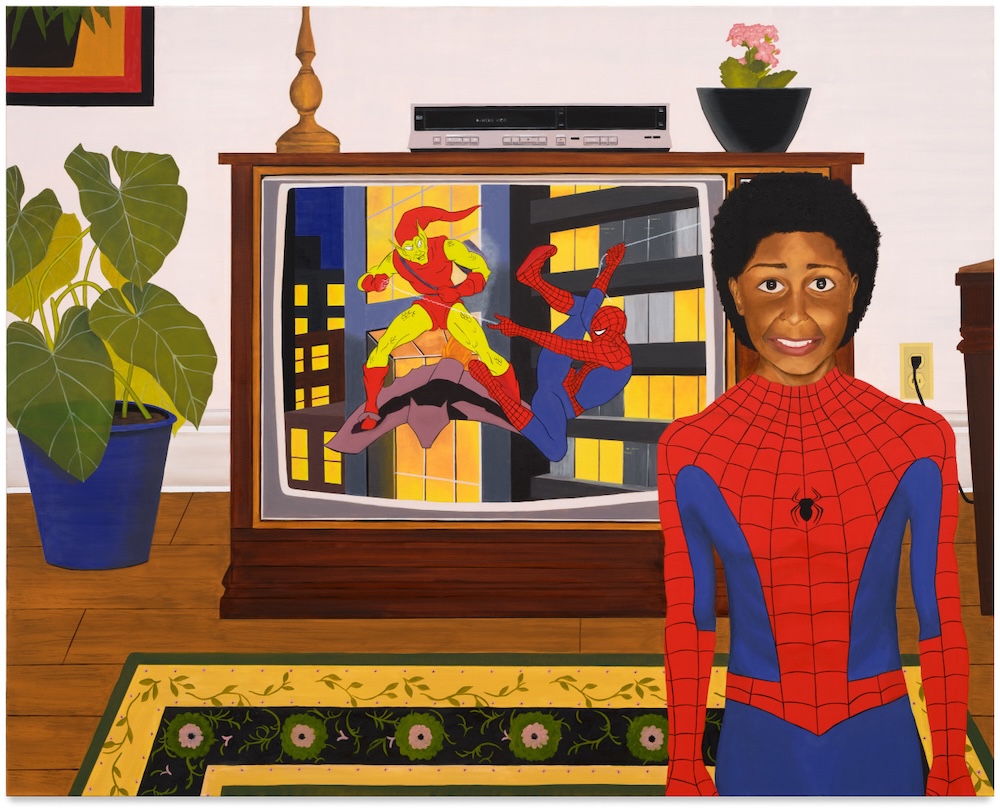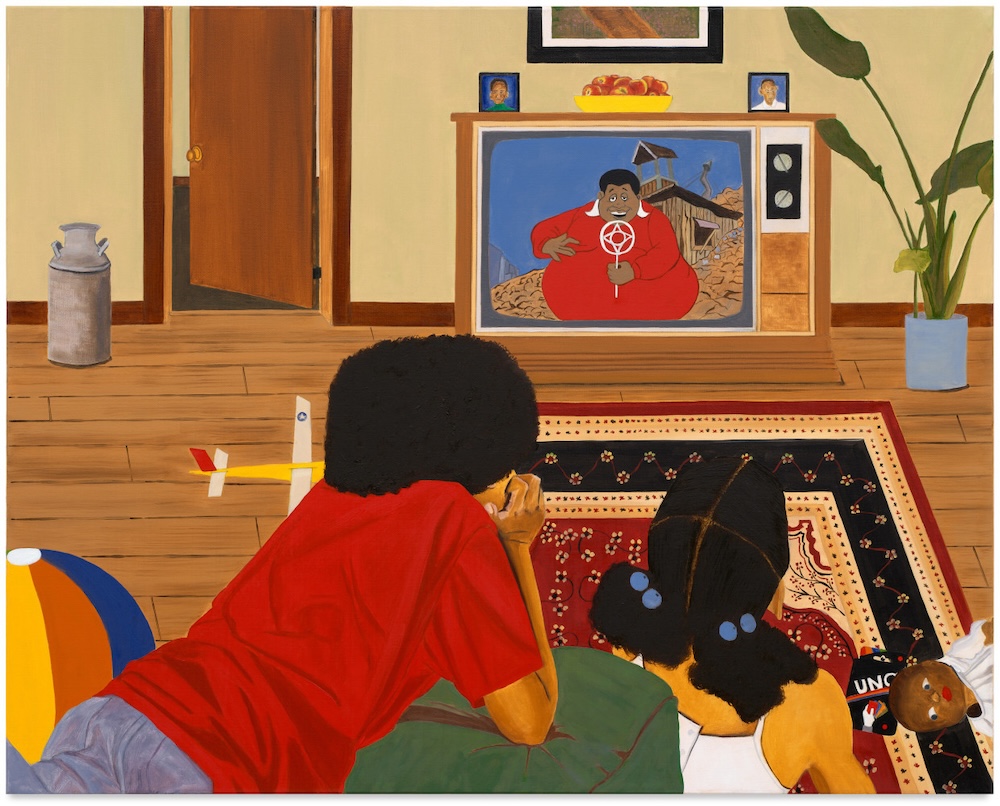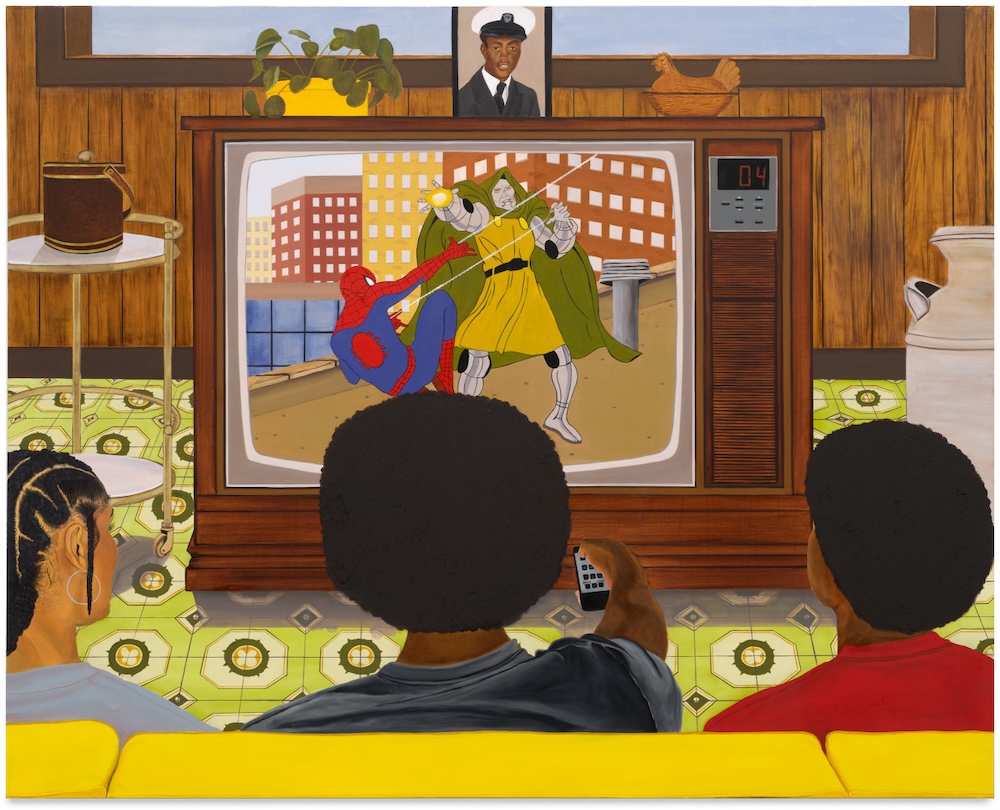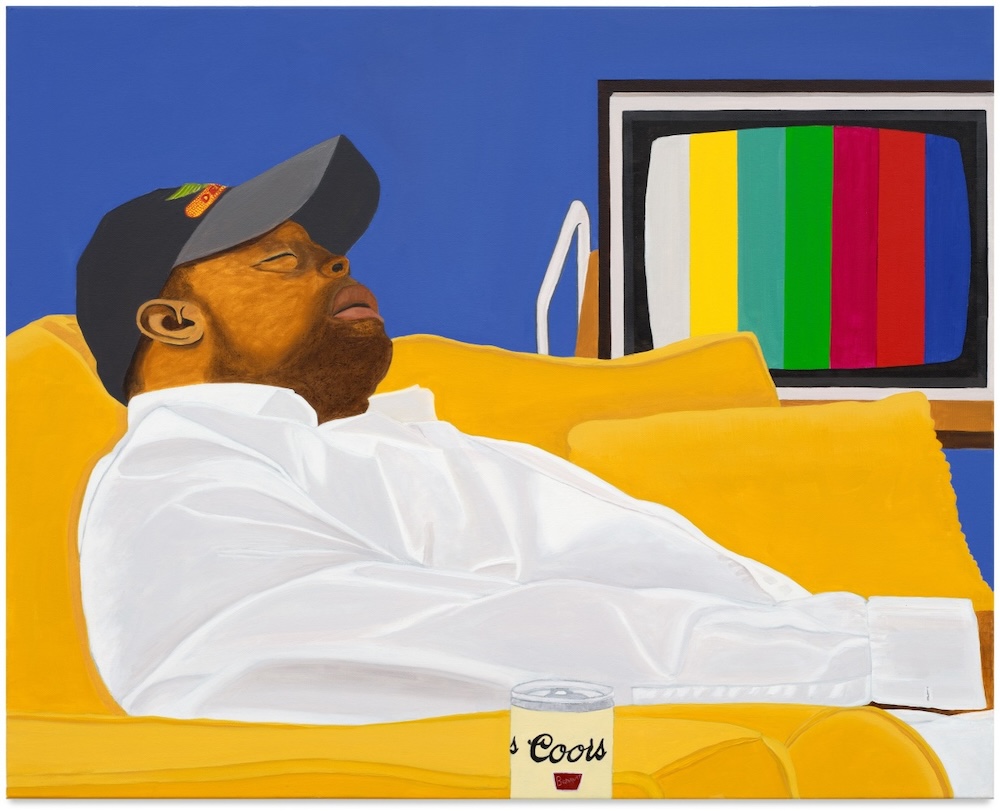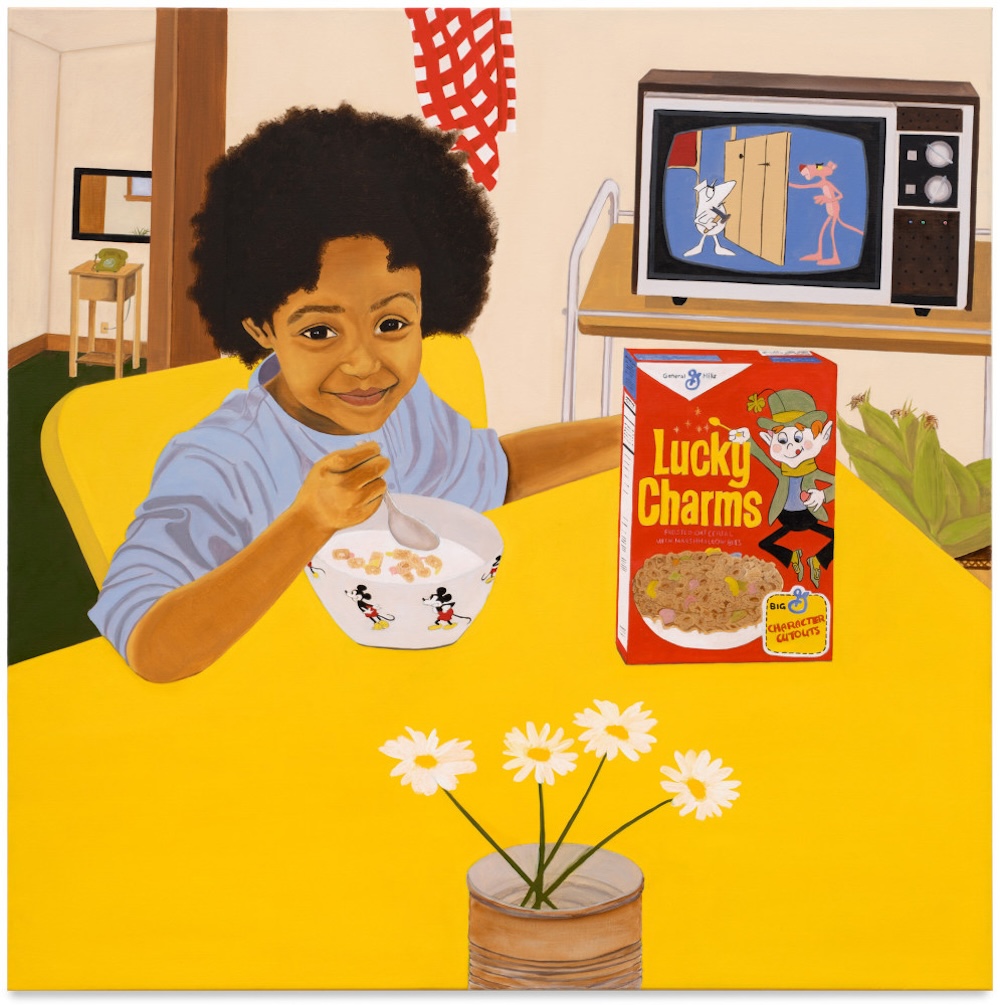Harper’s is pleased to announce After These Messages, Wisconsin-based artist Keith Jackson’s first solo exhibition with the gallery. The presentation features ten new oil paintings by Jackson and is on view at the Los Angeles space through December 16, 2023.
Keith Jackson’s approach to painting is grounded in the intimacies of domestic life and familial memory. The artist paints vivid and hyper-realistic scenes that recall his upbringing in the 1970s and 1980s in the rural town of Essex, located in Southeastern Missouri. Raised in a farming community, Jackson and his siblings supported their family with agricultural responsibilities throughout their youth, during which they were allowed to watch television in the quiet lapses between farming and school work, often in the mornings and after school. For Jackson, the staple household object stimulated restful intervals of gathering for him and his siblings. The act of watching television was thus a sacred one—an activity foundational to his childhood memories and a recurrent motif that appears frequently in After These Messages.
Throughout the exhibition, Jackson crystallizes the coveted daily ritual of watching television with a sentimental eye and brilliant palettes: the artist commemorates periods of familial communion during which spirited cartoons blare from television screens. In It’s Too Early and Before School, for example, children based on the artist’s family members gleefully watch episodes of Looney Tunes and Pink Panther as they devour bowls of cereal at their vibrant yellow breakfast table. Meanwhile, in Doomed and That’s Me, children observe Spider-Man defeating his villains from the comfort of their living room couch.
Across these two works and throughout the exhibition at large, the artist pays close attention to the interior details that distinguish his memories of bygone times. Webs of mosaic linoleum tiling, flushed with robust green and orange hues, bedeck the floors, while 1970s-style wood paneling adorns the walls in both paintings. Meanwhile, in I’m Him, Jackson transports viewers to the 1990s with his documentation of anachronistic technology. Here, a young boy resembling one of the artist’s children is dressed as Spider-Man. He poses in front of the television from which the beloved animations roar behind. A VCR player that sits atop the television propels viewers into the 1990s. The work marks the passage of time and reminds the artist of another significant home of his: the house where Jackson and his wife raised their sons.
Within rural America in the 1980s, access to media was, in many ways, fixed to the American dream itself. Jackson was taught that possessing a television, a phone, and a car, was a kind of rite of passage. These technologies were at once symbols of interconnectivity and capital, but also, embodied cultural relevance. Ultimately, with After These Messages, Jackson suggests that the visual media of yesteryear—whether it be in the motion graphics that grace the television or the still cartoons that enliven cereal boxes—are not just relegated to the distant past. These are timeless images that provide insight into the ways in which the aesthetics of yesterday are entangled in the present. Jackson, across tender and visceral snapshots of previous homelife, reckons with the universal imagery that colors collective imagination. In doing so, the artist uncovers the quotidian activities and textured visual media that remains consistent, tethering communities across social realities.





